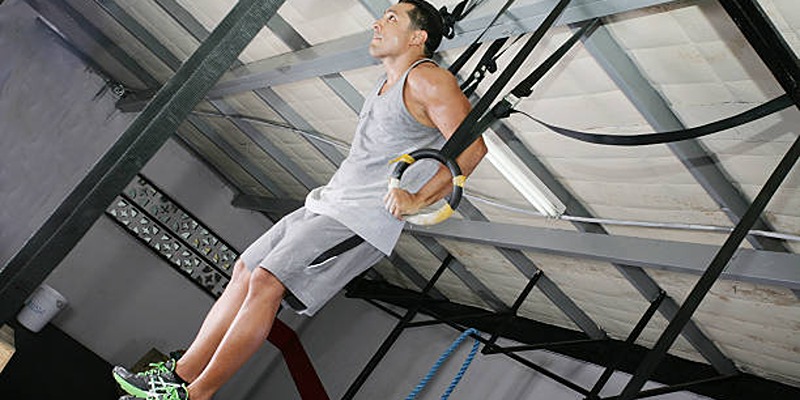Do you want to strengthen your core and get rid of back pain? Stability discs can be the solution you've been looking for. These adaptable exercise aids are frequently used in rehabilitation settings in addition to being useful for improving focus and helping kids with special needs.

It is imperative to utilize them appropriately to prevent any possible strain or harm. Are you prepared to learn some useful exercises to address your back issues? We'll go over a few quick yet powerful exercises you can do with a stability disc.
Exercise Challenges and Active Sitting with Balance Discs
Here are some of the useful and efficient exercises that can be done on a stability disc to aid with back problems.
Walks Lunges
Performing lunges on a stable disc is a dynamic and efficient approach to improving general mobility and strengthening different leg muscle groups. This exercise is a great complement to any fitness regimen because it addresses important areas like the back, legs, and hips.
Place both feet on the stability disc at the beginning of the lunge technique. Next, take a step back with your left leg and bend your right leg at the same time to bring your body closer to the floor. Throughout the motion, keep your balance and stability to ensure a steady and controlled descent.
To increase the difficulty and work more muscles, keep your arms straight out in front of you or rest on your hips. Maintain the lunge posture. After about two seconds, hold the lunge position and then come back to the beginning position. After 8–10 repetitions of this movement, turn to the other leg to finish the set.
Forearm Plank
When done on a stability disc, the forearm plank is a very powerful exercise for building core strength. The abs, lower back, and glutes are activated when you place your forearms on the stability disc and form a plank position, which enhances core stability overall. This workout is very good for strengthening your core and lowering your chance of lower back problems. Kneel in front of the stability disc to start the forearm plank exercise.
With your elbows exactly behind your shoulders, lowering your torso will ensure that your forearms are securely placed on the disc. With your weight supported by your toes, extend your legs such that your body forms a straight line from your head to your heels. As you maintain this posture for 30 to 60 seconds, try to complete three to five repetitions, interspersing your sets with little rest periods of about 30 seconds.
Warm Up Balance
Warm-up exercises with a stability disc are essential before moving on to the main workouts. These warm-up exercises accomplish two main goals: they stimulate blood flow to your muscles, which lowers the chance of damage during your workout, and they assist your body in adjusting to balancing on the disc. Start by placing both feet firmly on the stability disc to begin a warm-up balancing practice.
As you slowly raise the opposite leg off the disc, either to the front or the side, shift your weight onto one foot. Stretch both arms outward to help you stay balanced. After about 30 seconds, hold this position and then repeat the procedure with the other foot. As you go, try to increase the time spent on each hold to sixty seconds on each side. To improve your stability training even further, try closing your eyes during the workout as an added challenge.
Single Leg/Knee Raise
This exercise helps to enhance back posture, balance, coordination, and agility, among other areas of fitness. Start by standing on the balance disc with both feet in line with your hips. Make sure your body is upright, and your core is active in order to complete single leg/knee lifts correctly. After you've stabilized your equilibrium, slowly extend one leg at a 45-degree angle while maintaining a straight knee and forward-pointing toes.
Reach out with your arms to help you stay balanced, or rest them on your hips for more support. After about two seconds, bring your leg down until your toes just barely contact the floor. After about 8–10 repetitions, transfer to the other leg and repeat this movement. Consider raising your leg to a 90-degree angle in front of you on each repetition for a more challenging exercise. This adjustment ups the exercise's difficulty level while maintaining its ability to train the core muscles and improve balance.
V-Hold Posture
A great exercise for stabilizing and strengthening the core muscles, especially those supporting the spine and back, is the V-hold, which may be done on a stable disc. The V-hold strengthens the core generally and encourages core stability by activating the abdominal muscles and testing balance. Start by sitting on a stability disc with your heels on the floor and your knees bent in order to perform the V-hold.

For balance, extend your arms sideways and position yourself in the disc's center. Lift one leg slowly off the ground, bending it to about a 90-degree angle. Maintaining the bent-knee stance, raise the opposite leg to match once steady. To further activate your core muscles, raise your arms off the floor. Keep this V-sit in place. Raise your arms off the floor to activate your core even more. For at least thirty seconds, hold this V-sit position while paying close attention to your balance and stability.
To finish the set, repeat the action two or three more times. You can stretch your legs so they are straight and angled at a 45-degree angle from the floor for an additional challenge. Light dumbbells can also be added to the workout to intensify it and work the core muscles even more.
The Bottom Line!
A stability disc can be a game-changer when it comes to strengthening your core and avoiding back pain during your exercise regimen. These lightweight, adaptable training aids provide a special balancing challenge that might improve your general fitness.
Before beginning any new workouts, it's crucial to speak with your doctor or physiotherapist if you're healing from a back problem. Stability discs can be an invaluable tool in your quest for a stronger, healthier back if you take the proper safety measures.



